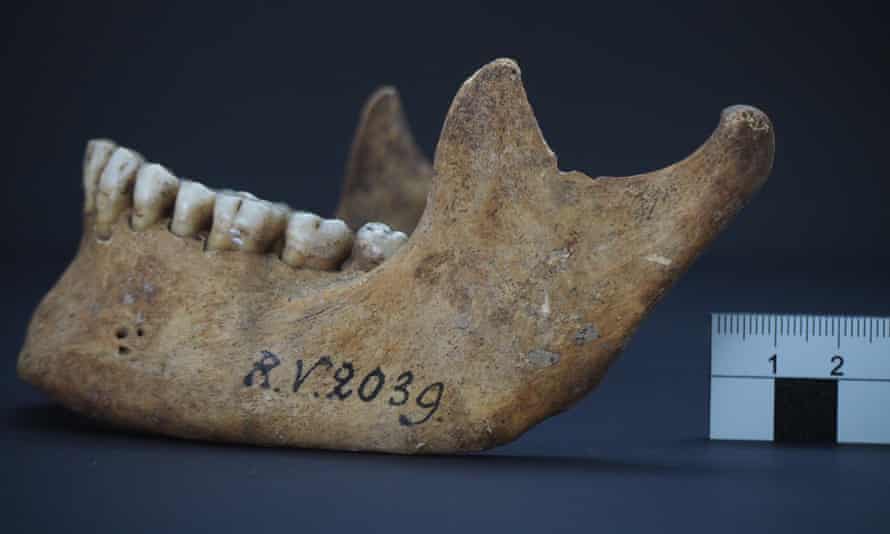
[ad_1]
A hunter-gatherer who lived more than 5,000 years ago is the first known person to die of the plague, researchers have revealed.
Stone Age communities in Western Europe experienced a huge population decline around 5,500 years ago, an event that would later have allowed a huge migration of people from the east.
The plague was put forward as an explanation after it was discovered in Stone Age individuals, including a 20-year-old woman from a rural farming community in Sweden.
However, the researchers say their new finding casts doubt on the idea suggesting that the nature of the strain found in hunter-gatherers is unlikely to cause rapid spread.
“We believe that these early forms of Y. pestis couldn’t really cause large epidemics, ”said Professor Ben Krause-Kyora, co-author of the study at Christian-Albrecht University in Kiel, Germany.
Writing in the journal Cell Reports, Krause-Kyora and colleagues describe how they analyzed ancient DNA recovered from the teeth and skull bones of four individuals buried in a prehistoric landfill, or shell mound, at a site in Latvia called Riņņukalns.
The remains, dating from 5,300 to 5,050 years ago, came from a young woman, a baby and two men, and were unearthed in two excavations, one in the 19th century and the other just a few years ago.

The team examined genetic material for signs of known pathogens, including Y. pestis – the bacteria that cause the plague, revealing that one of the men, aged 20 to 30, had not only fragments of DNA but also proteins, indicating that he had died with a now extinct form of the plague in his bloodstream.
“Up to date [it is], the oldest known plague victim, ”said Krause-Kyora.
Further analysis revealed that the strain was likely separated from all other forms of Y. pestis about 7,200 years ago, making it the earliest known strain of plague, and was clearly different from those found later in the Neolithic and Bronze Age.
The researchers added that the strain did not have the gene that allowed plague to be spread by fleas.
“The flea appears to be one of the main vectors which results in very rapid distribution and rapid infection in the middle ages,” Krause-Kyora said, adding that black buboes, caused by infected lymph nodes, were associated with this pathway. of propagation.
Instead, the team says the man may have had sepsis, a blood infection, caused by a rodent bite or pulmonary plague, which affects the lungs and is spread by droplets. Although the latter is generally more virulent than bubonic plague, the team says the genetics of the former strain suggest that its ability to spread may have been compromised.
The researchers also said they found high levels of Y. pestis DNA from Stone Age man, suggesting he could have lived with the plague for some time and therefore the disease could have been mild.
Krause-Kyora said the results – all of the evidence of Y. pestis in ancient populations beyond Western Europe, the scarcity of Stone Age plague pits and the careful burial of man in Latvia – suggested that the plague was unlikely to be present. origin of the Stone Age population decline. Instead, he supported the idea that factors such as climate change were playing a role.

Professor Simon Rasmussen of the University of Copenhagen, who was co-author of the research on the Swedish Stone Age plague victim, praised the new study but said it did not rule out the possibility that the plague caused a dramatic decline of the stone. age population, adding that there was little evidence that Stone Age strains caused only mild disease.
“The individual actually straddles the Neolithic decline and most likely died from the plague infection, ”he said.
“We know that large settlements, commerce and movements occurred during this period and therefore human interaction is still a very plausible cause of the spread of the plague in Europe at this time.”
[ad_2]
Source link